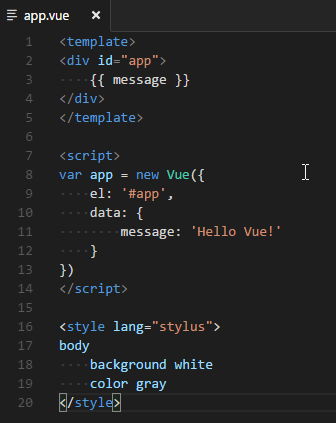It would be nice if we could just write what we wanted to appear in the slot in a normal Vue way. Thinking in portals. This is where portals come in. And they work exactly like you would expect them to. Slots Vue 3 exclusive no deposit bonuses from some of the best casinos around for US players. The bonus codes on our site are unique, which means you can use them only if you get to the casino through our website. The 'Slots' Lesson is part of the full, Introduction to Vue 3 course featured in this preview video. Here's what you'd learn in this lesson: Sarah explains how slot elements allow for the possibility of passing content into a component with ease. A few examples are covered where components utilize slots to create dynamic content.
You’re browsing the documentation for v2.x and earlier. For v3.x, click here.
Official Flux-Like Implementation
Large applications can often grow in complexity, due to multiple pieces of state scattered across many components and the interactions between them. To solve this problem, Vue offers vuex: our own Elm-inspired state management library. It even integrates into vue-devtools, providing zero-setup access to time travel debugging.
Information for React Developers
If you’re coming from React, you may be wondering how vuex compares to redux, the most popular Flux implementation in that ecosystem. Redux is actually view-layer agnostic, so it can easily be used with Vue via simple bindings. Vuex is different in that it knows it’s in a Vue app. This allows it to better integrate with Vue, offering a more intuitive API and improved development experience.

Simple State Management from Scratch
It is often overlooked that the source of truth in Vue applications is the raw data object - a Vue instance only proxies access to it. Therefore, if you have a piece of state that should be shared by multiple instances, you can share it by identity:
Now whenever sourceOfTruth is mutated, both vmA and vmB will update their views automatically. Subcomponents within each of these instances would also have access via this.$root.$data. We have a single source of truth now, but debugging would be a nightmare. Any piece of data could be changed by any part of our app at any time, without leaving a trace.
To help solve this problem, we can adopt a store pattern:
Notice all actions that mutate the store’s state are put inside the store itself. This type of centralized state management makes it easier to understand what type of mutations could happen and how they are triggered. Now when something goes wrong, we’ll also have a log of what happened leading up to the bug.

Vue 3 Slots Video Poker
In addition, each instance/component can still own and manage its own private state:
It’s important to note that you should never replace the original state object in your actions - the components and the store need to share reference to the same object in order for mutations to be observed.
As we continue developing the convention where components are never allowed to directly mutate state that belongs to a store, but should instead dispatch events that notify the store to perform actions, we eventually arrive at the Flux architecture. The benefit of this convention is we can record all state mutations happening to the store and implement advanced debugging helpers such as mutation logs, snapshots, and history re-rolls / time travel.
This brings us full circle back to vuex, so if you’ve read this far it’s probably time to try it out!
Vue 3 Slots


Vue 3 Nested Slots

Vue3 Slot 使用
